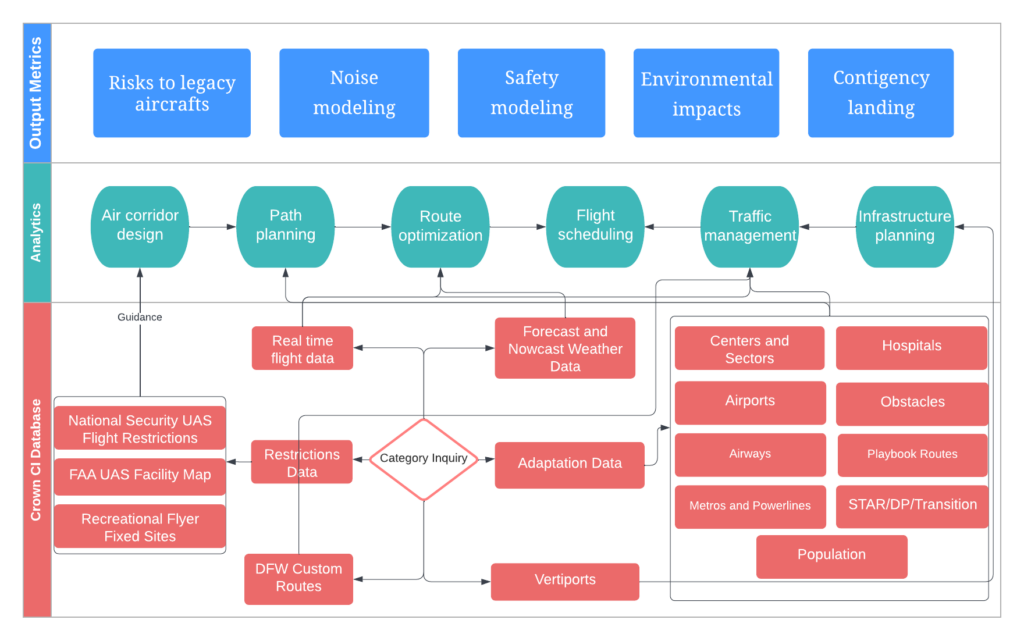Advanced Air Mobility
Our research lab employs cutting-edge tools and methodologies such as high-performance computing, optimization, AI, and data science to advance the design and simulation of urban and regional air mobility infrastructure and operations. A cornerstone of our work includes the development of VertiSim [TRB’24,], a multi-agent discrete-event vertiport network simulator, and BigUAMSim [IEEE TITS’24], a GPU-based regional-scale high dimension transportation simulation, both contributing to intricate and accurate mobility simulations.

Complementing our simulation efforts, we utilize energy optimal trajectory design to improve air traffic efficiency and minimize energy consumption [TRB’24]. Through smart corridor engineering, we further ensure safe, swift transportation across our carefully planned air corridors [ISC2’22]. The main thrust of our research is harnessing the potential of zero-emission aircraft to enhance regional economic development, promote equitable access to goods and services, transform mobility by doubling door-to-door speeds from 60 mph to 120 mph, and revitalize regional airports [TRB’24][DASC’22][AIAA’22][AIAA’21][IEEE TITS’21][AIAA’18]. Our ambitious goal is to reduce door-to-door mobility costs to below 60 cents per mile while achieving the capacity of a single highway lane, which is 3,300 passengers per hour.
Autonomy of Flight

A crucial requirement for scalable deployment of next generation flight systems is safe autonomy. Topics of interest range from collision avoidance using noisy sensors, efficient motion planning, vehicle design strategies, map generation, and anomaly detection. Applications of interest include transportation, precision agriculture, infrastructure inspection, construction site monitoring, and firefighting.
Traffic Management and Resource Allocation for UAV-based Parcel Delivery in Low-altitude Urban Space

We propose a framework of Unmanned Aircraft Vehicles (UAV) system traffic management in the context of parcel delivery in low-altitude urban airspace, including clustering-based UAV path planning, Unmanned Aircraft System Traffic Management (UTM) with conflict detection and resolution (CD&R), and mechanism design for airspace resource allocation. Extensive numerical analysis is conducted with San Francisco. The results show the effectiveness of the proposed framework, particularly the scalability of the traffic management model. This work proposed the first scalable UTM concept of operations that provides both conflict resolution and efficient resource allocation. We developed innovative methodology for identifying conflict-intensive sets of flights using complex network theory. Besides, we developed methodology for characterizing obstacles in a dense and complex urban environment.